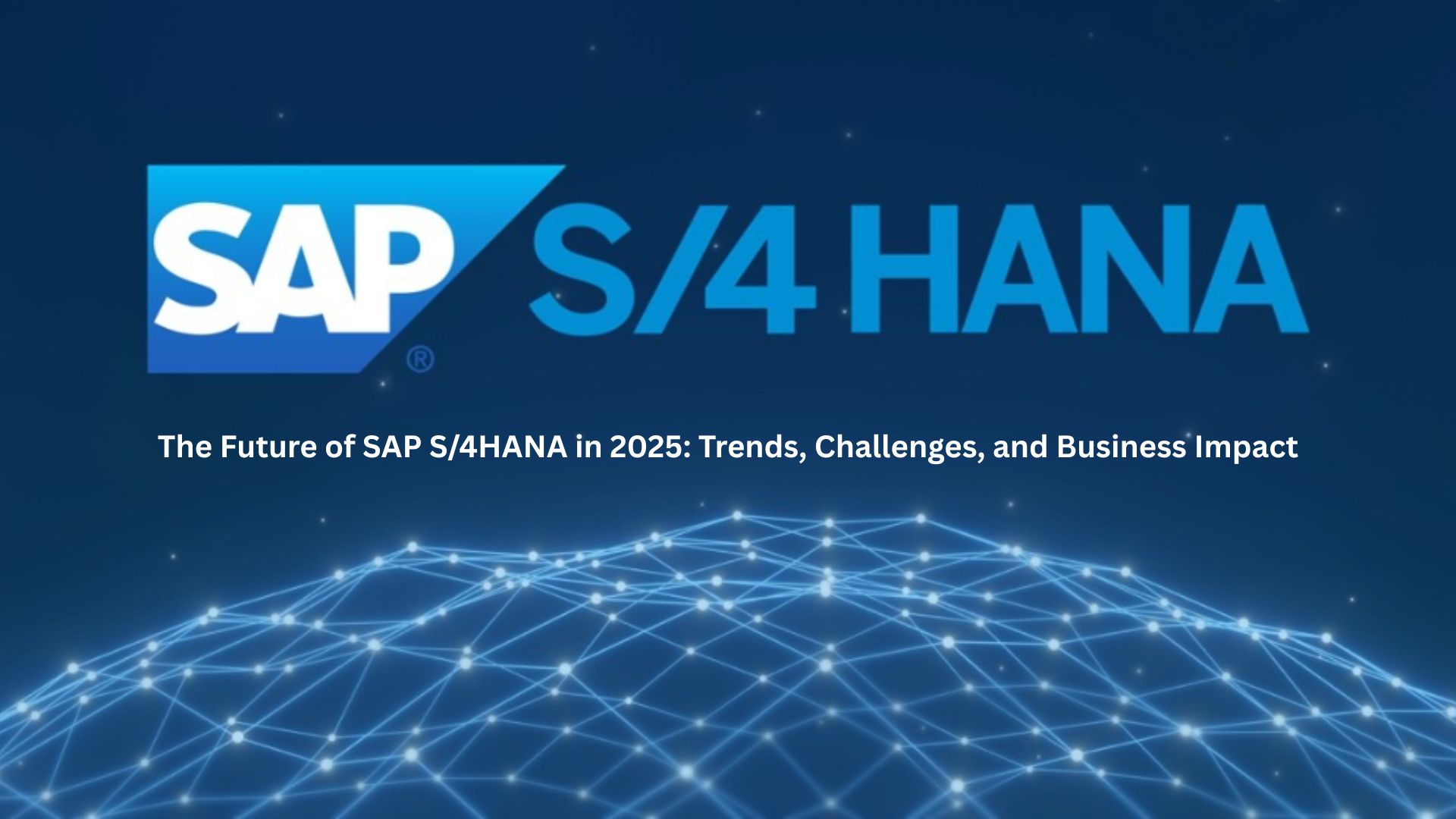The Future of SAP S/4HANA in 2025: Trends, Challenges, and Business Impact
SAP S/4HANA has evolved from being just another ERP product into the digital core of modern enterprises. As we step into 2025, the business world is witnessing a new phase of digital transformation, and SAP S/4HANA is at the center of this change. Organizations are no longer just adopting ERP for operational efficiency; they are rethinking their entire business models to align with real time intelligence, embedded analytics, AI driven automation, and industry specific best practices that S/4HANA now delivers. From manufacturing and retail to banking and government sectors, SAP S/4HANA’s capabilities are influencing how companies innovate, optimize, and scale in a rapidly shifting economic landscape.
In 2025, SAP has strengthened its cloud first commitment, urging businesses to move from on premise landscapes to cloud based or hybrid deployments. This transition is not just a matter of infrastructure it's a fundamental shift in how enterprises consume software and harness value from it. The modular design of SAP S/4HANA, when combined with SAP Business Technology Platform (BTP), allows organizations to build agile extensions, integrate third party apps seamlessly, and unlock real time insights from both SAP and non SAP data sources. Companies that once struggled with legacy bottlenecks are now embracing the power of real time data processing, predictive analytics, and digital workflows enabled by S/4HANA’s intelligent capabilities.
However, with opportunities come challenges. One of the biggest hurdles in 2025 is the talent gap. While many organizations are eager to implement or upgrade to SAP S/4HANA, a shortage of skilled professionals in SAP functional and technical domains continues to slow down digital transformation. Moreover, the complexity of brownfield vs. greenfield migration decisions, change management concerns, and aligning stakeholders with SAP’s new licensing models are ongoing issues that businesses must address. Enterprises are increasingly seeking partners and SAP consultants who not only have technical expertise but also understand the business context of change, industry specific processes, and the end user experience.

Security is another top concern in 2025. With cyberattacks becoming more frequent and sophisticated, SAP landscapes are prime targets due to the sensitive business data they house. S/4HANA's modern architecture supports better security features, but these are only effective when properly configured and monitored. Organizations must prioritize cybersecurity from the beginning of their digital transformation journey, ensuring identity management, encryption, compliance, and proactive threat detection are all built into the system architecture. Regular audits, patch updates, and internal access control checks are now considered critical components of every SAP implementation strategy.
As digital transformation matures, businesses are using SAP S/4HANA not just for core financials or supply chain, but as a strategic platform to drive innovation. Industries such as pharma, retail, and energy are leveraging embedded AI and machine learning features in S/4HANA to forecast demand, manage dynamic pricing, optimize logistics, and improve procurement strategies. The convergence of IoT, big data, and edge computing with S/4HANA is also unlocking new business models think smart factories, connected products, and intelligent asset management. Companies that leverage these intelligent features are better positioned to adapt to changing consumer behavior, volatile supply chains, and new sustainability regulations.
What’s especially notable in 2025 is SAP’s push toward industry cloud solutions. These are pre configured templates built on top of S/4HANA that cater to specific industries such as automotive, public services, utilities, and consumer goods. This industry first approach shortens the implementation cycle, reduces customization needs, and delivers faster time to value. Businesses now have the flexibility to start with a standard S/4HANA digital core and scale with industry specific innovation as needed, all while retaining full integration with SAP’s ecosystem.
For CIOs and decision makers, the question in 2025 is no longer Should we adopt SAP S/4HANA it’s How fast can we transform and how much business value can we extract from it?” The earlier enterprises start their digital journeys, the better they can prepare for future disruptions. Government policies, ESG reporting standards, and consumer expectations are all changing rapidly, and companies must have real time, transparent, and adaptable systems to stay competitive. SAP S/4HANA offers the technology backbone to meet these needs but only if businesses take a proactive approach toward adoption, skilled resourcing, and user training.
Conclusion
The future of SAP S/4HANA in 2025 is full of promise, but the path to transformation requires clear strategy, cross-functional alignment, and a long term vision. Enterprises that embrace innovation, invest in the right talent, and prioritize continuous improvement will unlock the full potential of SAP S/4HANA. This ERP platform is no longer just a system of record it’s a system of innovation, insight, and competitive advantage for the digital era. As the SAP ecosystem evolves with cloud native applications, AI integration, and industry first solutions, companies that stay ahead of the curve will not just survive they will lead.